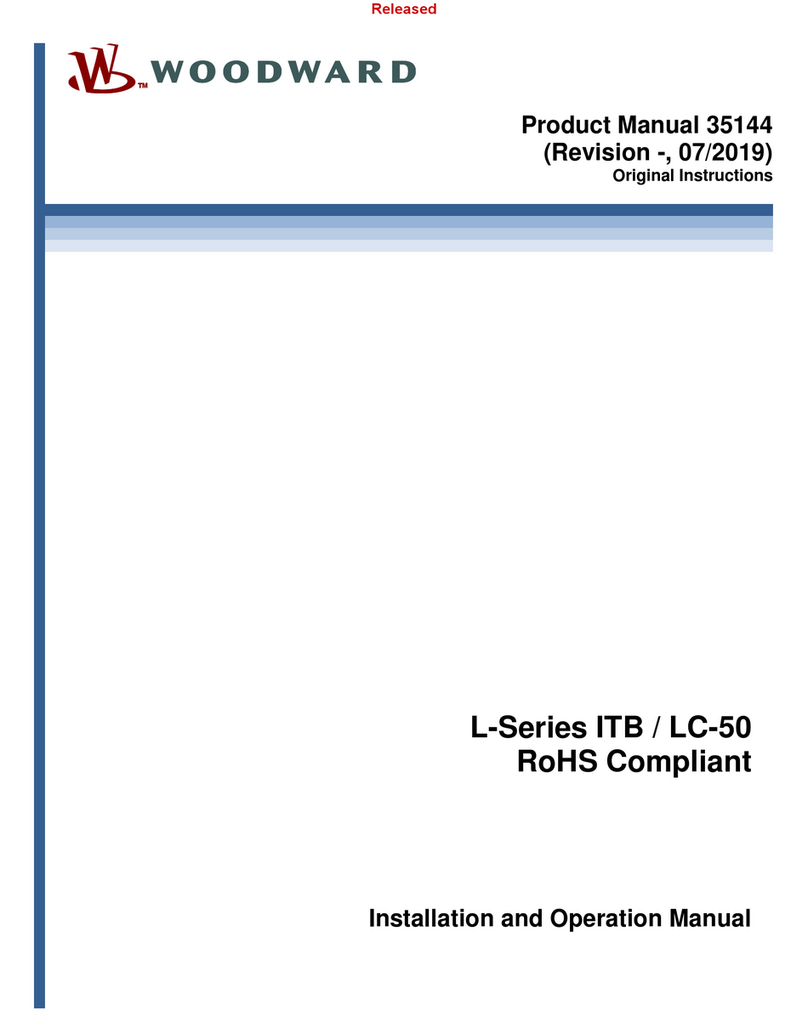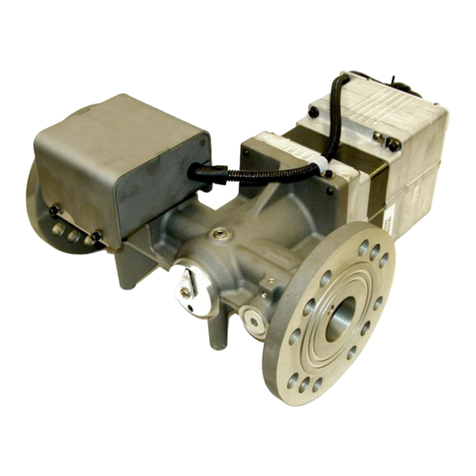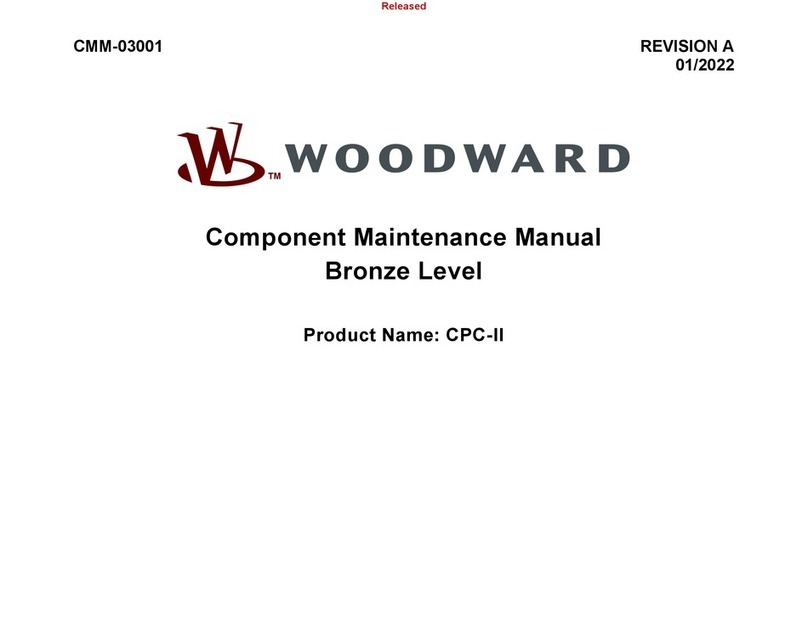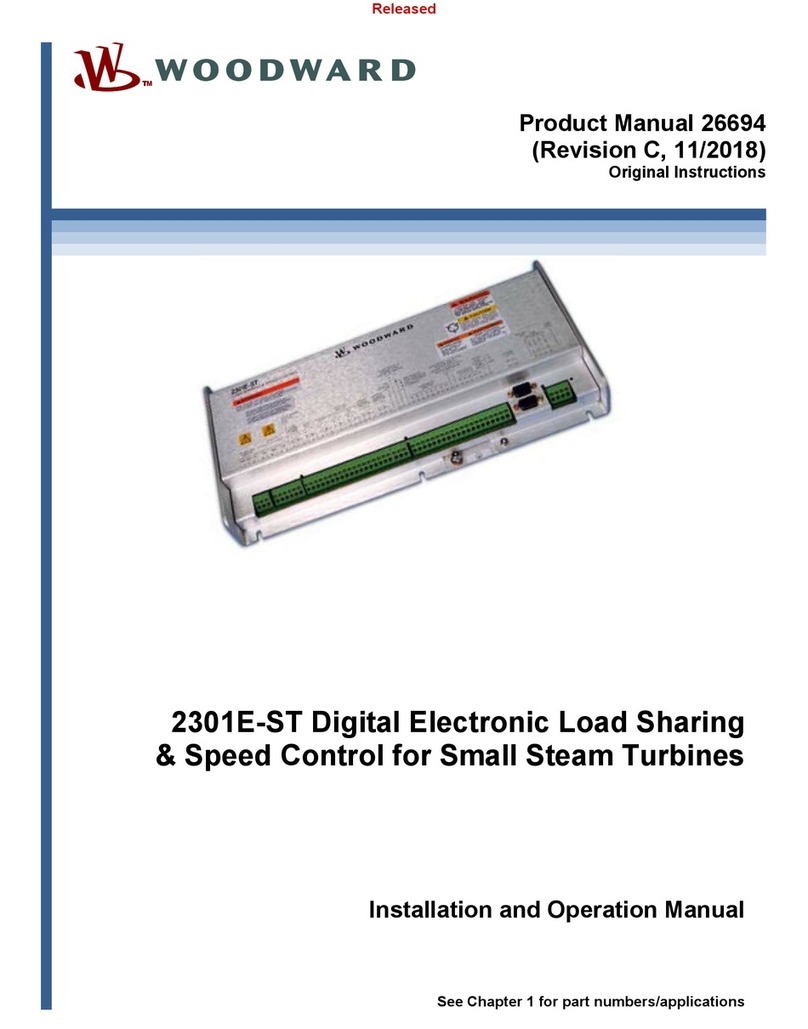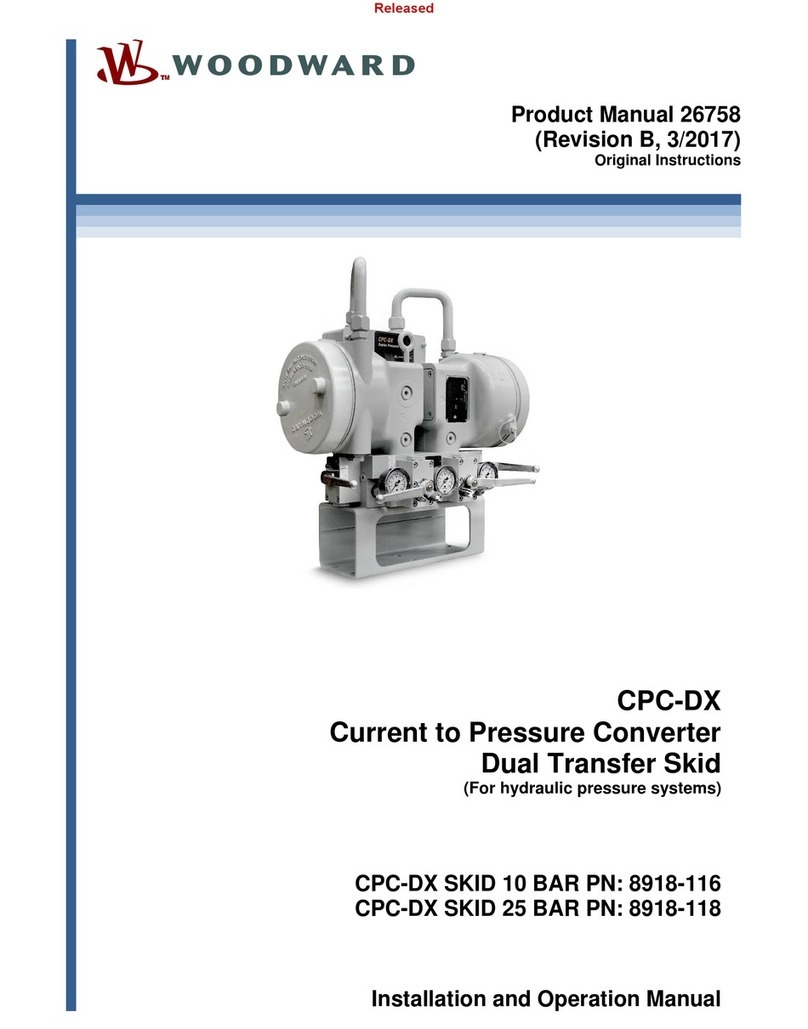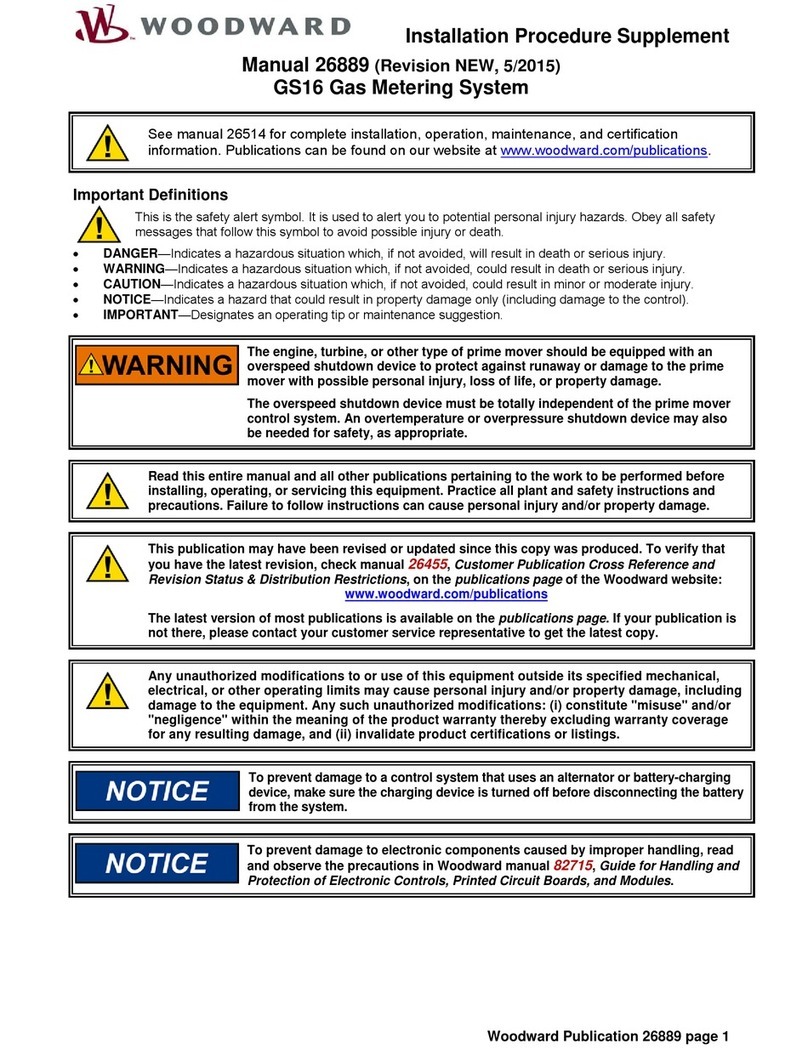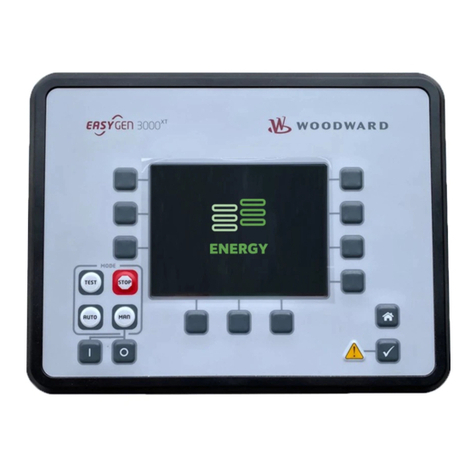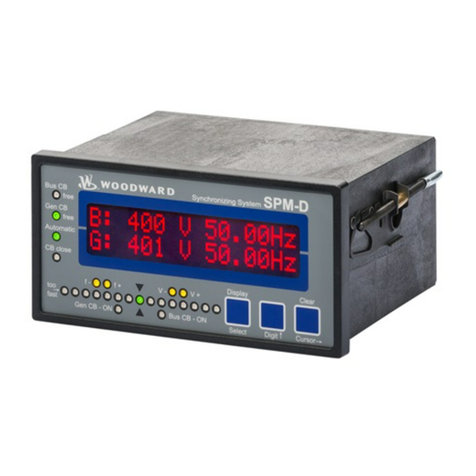
Manual 36541 Solenoid Troubleshooting Guide
Woodward i
Contents
E
LECTROSTATIC
D
ISCHARGE
A
WARENESS
..................................................
II
C
HAPTER
1. G
ENERAL
I
NFORMATION
..........................................................1
Solenoid Operation.................................................................................................1
Single Coil Solenoid........................................................................................1
Dual Coil Solenoid ..........................................................................................2
Three Methods for Turning Off the Pull Coil...................................................3
Externally Switched Solenoid Terminations....................................................4
Pull vs. Push Solenoids ..........................................................................................5
Energized-to-Run vs. Energized-to-Stop Applications............................................5
Shutdown vs. Throttle (Choke) Applications...........................................................6
Coil Protection ........................................................................................................6
C
HAPTER
2. B
ASIC
T
ROUBLESHOOTING
......................................................7
General Guidelines.................................................................................................7
Troubleshooting Techniques ..................................................................................7
Safety Precautions..................................................................................................8
Solenoid Troubleshooting Process.........................................................................8
Identifying Solenoid Type........................................................................................9
Part Number Descriptor........................................................................................10
C
HAPTER
3. D
ETAILED
T
ROUBLESHOOTING
..............................................11
Preliminary Check.................................................................................................11
Power to the Solenoid...........................................................................................11
Wiring to the “S” Terminal of Starter.....................................................................12
Solenoid Coil Resistance Check...........................................................................13
Table 1A. Coil Resistance Externally Switched Solenoids ...........................14
Table 1B. Coil Resistance Internally Switched Solenoids.............................15
Solenoid Operation on the Engine or Application.................................................16
Table 2. Solenoid Operation of the Engine...................................................16
Table 3. “NO START” ...................................................................................17
Table 4. “NO RUN” .......................................................................................17
Table 5. “NO SHUTDOWN”..........................................................................17
Solenoid Voltage Check .......................................................................................18
Table 6. Solenoid Voltage.............................................................................19
Solenoid Linkage Adjustment ...............................................................................20
Table 7. Linkage Adjustment ........................................................................21
Overload Protection..............................................................................................22
Solenoid Bench Testing........................................................................................22
C
HAPTER
4. S
ERVICE
O
PTIONS
................................................................23
Product Service Options.......................................................................................23
Returning Equipment for Repair ...........................................................................24
Replacement Parts ...............................................................................................25
How to Contact Woodward...................................................................................25
Engineering Services............................................................................................26
Technical Assistance............................................................................................27
